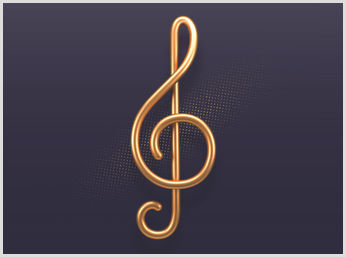It's important to consider the variety of musical instruments before we talk about clefs. Some instruments have a high pitch range, such as the Violin, Trumpet and Flute. Other instruments have a low pitch range, including the Cello, Trombone and Bassoon. Then we have instrument with an extreme pitch range, such as the Piccolo that is capable of playing a D five octaves above middle C, and the Sousaphone (from the Brass family) that can play an F four octaves below middle C. There is also the Piano, which has a very wide pitch range and can play both low and high pitches.
Clefs allow instruments to read music on the stave, regardless of their pitch range. If music did not use different staves, instruments that are particularly high or low would have the majority of their notes written above or below the stave, which obviously isn't very user friendly. The clef shows what notes are represented by lines and spaces on the stave. The bass clef is for instruments with a low pitch range, while the treble clef is for instruments with a high pitch range. The piano is unique because the right hand uses the treble clef for the top half of the piano and the left hand uses the bass clef for the lower half.
This all means that notes read very differently in each clef. An example would be to place a note in the same place on the stave with a different clef. If we put a note on the top space in the treble clef, this will be an E. In the bass clef, this same note placement will be a G nearly two octaves lower.
There are two other clefs, called the Alto clef and the Tenor clef, which will be covered in another blog post. They are far less commonly used and are for certain instruments and vocal ranges, such as the Viola.
This post was updated on 01 Aug, 2023.

